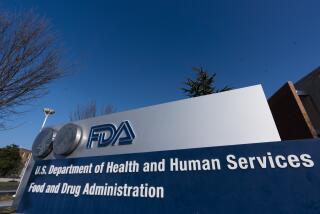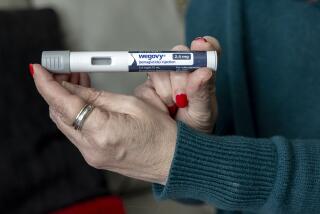There is a magic bullet for some cancers. But often, it misses
Shahzad Bhat, 53, was working as a bartender for elite gamblers at the MGM Mansion in Las Vegas when his doctor gave him three months to live in October 2017. There were no more treatments available for his aggressive form of lymphoma.
Like some of the gamblers he served, Bhat got lucky. A day before his appointment, an experimental cancer drug from Foster City, Calif.-based Gilead Sciences Inc. had been approved in the United States. Bhat became one of the first people to get the breakthrough therapy, Yescarta, after its approval, and his cancer went into remission quickly.
âIt was a miracle,â said his wife, Nicole Bhat. âHe was feeling fantastic. Thirty days out and we got a renewal on life.â
It didnât last. About six months later, the cancer known as diffuse large B cell lymphoma was back. Doctors and scientific researchers now are grappling with how they should treat patients like Bhat, who relapsed after getting promising therapies known as CAR-Ts. A study presented at the American Society of Clinical Oncology meeting in San Diego this weekend showed that 61% of patients who underwent the novel treatment werenât cancer-free two years later.
âIt can be a magic bullet, but thatâs only for 39 or 40% of patients,â said Fred Locke, a medical oncologist and leader of the immune-cell therapy initiative at Moffitt Cancer Center in Tampa, Fla. âThis is the best option we have right now, but itâs not a slam-dunk.â
Reality check
When Novartis AGâs Kymriah became the first CAR-T approved in August 2017, the new class of drugs was heralded as a breakthrough that could be a one-time cure for those who showed dramatic responses. It turns out that many patients relapse after their earlier remission.
Researchers are finding the same pattern with Kymriah, a therapy for children with a rare and hard-to-treat form of leukemia that is quickly fatal. About 83% were in remission after three months. Two years later, the rate had fallen to 62%.
âOne of the biggest challenges we face using this therapy is to manage expectations because of the responses weâve seen,â said Shannon Maude, a pediatric oncologist at Childrenâs Hospital of Philadelphia. âThere is a lot of hope and that hope is deserved, but we do think about the fact that some patients donât respond.â
Yescarta and Kymriah are pulling patients who ran out of options back from the brink of death. The therapies, which to this day remained the only two CAR-Ts approved by regulators, involve removing infection-fighting immune-system cells from the patientâs blood and, with a genetic tweak, reprogramming them in a laboratory to destroy cells that harbor the cancer. The dramatic results â and the prospect of wiping out cancer with one single infusion â came with stratospheric prices: Yescarta at $373,000 and Kymriah at $475,000.
But now doctors are testing additional treatments, post CAR-T infusion. Those options â including stem-cell transplants â could add hundreds of thousands of dollars to the cost, and they have toxic side effects.
âHave patienceâ
After Bhat had a lackluster response to standard drugs following Yescarta, he was given Merck & Co.âs blockbuster drug Keytruda, which works by removing a cloak tumor cells use to hide from the immune system. Itâs an infusion that costs $150,000 a year and isnât approved for lymphoma. His insurance company agreed to pay, and so far he says he is feeling great.
His advice for other patients? âBe hopeful and have patience,â he said. âSome days are normal, some are harder. Stay in a positive frame of mind and things will work out.â
Researchers at the ASH meeting in San Diego presented early data showing the addition of Keytruda or Bristol-Myers Squibb Co.âs Opdivo may help leukemia patients who saw benefits from CAR-T wane shortly after the treatment. Johnson & Johnsonâs Imbruvica was shown to make cells used in CAR-T healthier and more potent.
A third study found patients may be more likely to remain in remission after CAR-T if itâs followed by a stem-cell transplant, a toxic treatment that can be difficult to endure and cost as much as $1 million. To help minimize costs â to the patient and the payer â doctors are assessing using new genetic sequencing tests to find which patients would need a transplant most.
âUnderstanding which patients are likely to benefit helps us to ensure we give the medicine to the right patient,â said Joseph Alvarnas, a hematologist oncologist at City of Hope in Duarte, in the San Gabriel Valley. âWhat you donât want to do is use therapy where it brings no value to patients, adds to cost and doesnât lead to better results.â
More to Read
Inside the business of entertainment
The Wide Shot brings you news, analysis and insights on everything from streaming wars to production â and what it all means for the future.
You may occasionally receive promotional content from the Los Angeles Times.










